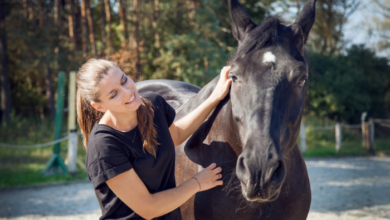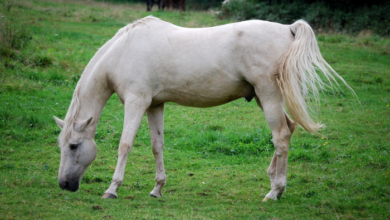
When creating a beautiful and vibrant lawn, turfgrass is often the go-to choice for homeowners and landscape enthusiasts. Its lush green appearance and soft texture make it an ideal option for outdoor spaces. However, achieving and maintaining a healthy turfgrass lawn requires knowledge and understanding of various factors such as turfgrass species maintenance practices, joint problems, and proper watering techniques. In this article, we will delve into the world of turfgrass and explore everything you need to know to create a stunning and sustainable lawn.
Types of Turfgrass Species
Turfgrass species come in various varieties, each with unique characteristics and requirements. Some common turfgrass species include Bermuda grass, Zoysia grass, Kentucky bluegrass, and fescue grass. Bermuda grass is known for its excellent heat tolerance and rapid growth, making it a popular choice for warm climates.
On the other hand, Zoysia grass thrives in warm and cool climates and is highly resistant to drought and heavy foot traffic. Kentucky bluegrass is a cool-season grass that forms a dense and attractive lawn, while fescue grass is known for its ability to withstand shade and cooler temperatures.
Before choosing a turfgrass species for your lawn, it is crucial to consider factors such as climate, soil type, sunlight exposure, and intended use. Some grasses may perform better in certain conditions, so selecting a species that suits your specific requirements is crucial.
Factors to Consider Before Choosing Turfgrass
Choosing the right turfgrass for your lawn involves considering various factors affecting its growth and overall appearance. One of the first factors to consider is climate. Different turfgrass species have varying heat and cold tolerance, so selecting a species that can thrive in your local climate is essential.
Soil type is another crucial factor, as some grasses prefer sandy soil while others thrive in clay or loamy soil. Additionally, sunlight exposure plays a significant role, as some grasses require full sun, while others can tolerate partial shade.
Another important consideration is the intended use of your lawn. If you have children or pets using the lawn frequently, choosing a turfgrass species that can withstand heavy foot traffic is essential. Some grasses are more resilient and can quickly recover from wear and tear, while others may struggle to regenerate.
Turfgrass Maintenance Practices
Maintaining a healthy and vibrant turfgrass lawn requires regular maintenance practices. One of the most critical aspects of turfgrass maintenance is mowing. Proper mowing techniques help promote healthy growth and prevent weed invasion. It is recommended to mow the grass at the appropriate height for the specific turfgrass species, as cutting it too short can weaken the grass and make it more prone to stress and disease.
Fertilization is another crucial aspect of turfgrass maintenance. Applying the right type and amount of fertilizer at the appropriate time can provide the grass with essential nutrients, promoting healthy growth and color. It is important to follow the manufacturer’s instructions and avoid over-fertilization, as excessive nutrients can lead to environmental pollution and damage to the grass.
Regular watering is essential for maintaining a healthy turfgrass lawn, especially during dry periods. Deep and infrequent watering encourages the grass roots to grow deeper, making them more resilient to drought conditions. Watering the lawn early in the morning is recommended to minimize evaporation and allow the grass to dry before nightfall, reducing the risk of disease development.
Common Turfgrass Problems and Solutions
Despite your best efforts, turfgrass problems can still arise. Some common issues include weed invasion, disease outbreaks, and pest infestations. Weeds can disrupt the appearance of the lawn and compete with the turfgrass for nutrients and water. To tackle weeds, it is important to identify the specific type of weed and choose an appropriate herbicide. Herbicides should be applied selectively to target the weeds while minimizing damage to the grass.
Disease outbreaks can also pose a threat to turfgrass health. Common diseases include brown patches, dollar spots, and powdery mildew. Proper cultural practices such as regular mowing, appropriate watering, and adequate soil drainage can help prevent disease development. If disease does occur, fungicides may be necessary to control and eradicate the problem.
Pests can also wreak havoc on a turfgrass lawn. Insects such as grubs, chinch bugs, and armyworms can cause significant damage by feeding on the grassroots or foliage. Integrated pest management techniques, including proper lawn maintenance, insect monitoring, and targeted insecticide application, can help keep pest populations under control.
Tips for Establishing a Healthy Turfgrass Lawn
Establishing a healthy turfgrass lawn requires careful planning and proper techniques. One of the first steps is to prepare the soil by removing any existing vegetation and improving its quality. This can be done by tilling the soil, adding organic matter, and leveling the surface. Once the soil is prepared, it is vital to choose high-quality grass seed or sod for optimal results.
Proper seeding or sodding techniques should be followed, including ensuring good seed-to-soil contact and adequate germination moisture. Following the manufacturer’s instructions and providing the grass with the necessary care during the establishment phase is essential.
Regular maintenance practices such as mowing, fertilizing, and watering should be implemented to promote healthy growth and maintain the lawn’s appearance. It is also important to address any issues promptly, including weed invasion, disease outbreaks, or pest infestations, to prevent further damage and maintain a healthy turfgrass lawn.
Tools and Equipment for Turfgrass Maintenance
Maintaining a turfgrass lawn requires using specific tools and equipment to achieve the best results. A lawn mower is one of the most essential tools, which should be chosen based on the specific turfgrass species and intended use. Other essential tools include a string trimmer for edging and trimming, a leaf blower for debris removal, and a rake for leveling and overseeding.
Additionally, fertilizers and herbicides may be necessary for maintaining the health and appearance of the lawn. It is essential to choose the right products for your specific needs and follow the manufacturer’s instructions for application.
Proper Watering and Irrigation Techniques for Turfgrass
Watering and irrigation play a crucial role in maintaining a healthy turfgrass lawn. Proper watering techniques ensure the grass receives the necessary moisture without promoting excessive growth or causing disease development. Deep and infrequent watering encourages profound root growth and increases the grass’s drought tolerance.
The specific watering requirements may vary depending on soil type, turfgrass species, climate, and season. Monitoring the soil moisture levels and adjusting the watering schedule is essential. Irrigation systems such as sprinklers or drip irrigation can be used to ensure even and efficient water distribution.
Conclusion
Creating and maintaining a beautiful and sustainable turfgrass lawn requires knowledge, planning, and proper techniques. By considering factors such as turfgrass species, maintenance practices, joint problems, and watering techniques, you can establish a vibrant and healthy lawn that enhances the beauty of your outdoor space.
Remember to choose a turfgrass species that suit your climate, soil type, sunlight exposure, and intended use. Implement regular maintenance practices such as mowing, fertilization, and watering to promote healthy growth and prevent weed invasion, disease outbreaks, and pest infestations. Use the appropriate tools and equipment for turfgrass maintenance, and follow proper watering and irrigation techniques to ensure the grass receives the necessary moisture.
With the information provided in this article, you now have the knowledge and tools to become a turfgrass expert. By applying these tips and techniques, you can create a stunning and sustainable turfgrass lawn that will envy your neighborhood. So get your hands dirty, and transform your outdoor space into a lush and vibrant oasis.




